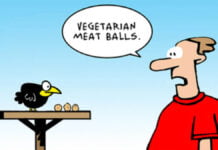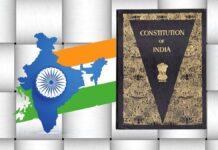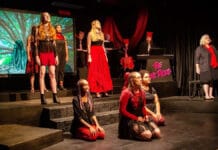The romantic comedy, often abbreviated as rom-com, is a subgenre of comedy that focuses on developing a romantic relationship. It typically focuses on the romantic relationships between two central characters, often featuring a mix of comedic situations, witty dialogue, and romantic entanglements. While the core elements remain consistent, this genre offers a diverse landscape of stories, catering to various audiences and preferences. The history of romantic comedy in literature is rich and varied, with roots tracing back to ancient times.
Classical Antecedents
The origins of romantic comedy can be found in ancient Greek and Roman literature, particularly in the works of playwrights like Aristophanes and Terence. These playwrights wrote comedies that often featured romantic themes, mistaken identities, and happy endings.
Medieval Romance
During the Middle Ages, romantic themes of courtly love became prominent in the literature of courtly love, which idealized chivalry, courtship, and romantic devotion. Stories of knights, damsels in distress, and quests for love, such as those found in Arthurian legends and medieval romances, laid the groundwork for later romantic comedies.
Shakespearean Comedies
William Shakespeare is perhaps the most influential figure in romantic comedy history. In plays like A Midsummer Night’s Dream, Much Ado About Nothing, and Twelfth Night, Shakespeare perfected the formula for a romantic comedy, blending elements of romance, humour, and social satire to create timeless classics that explored the complexities of love and relationships.
18th-century Satire
In the 18th century, writers like Jane Austen and Henry Fielding brought romantic comedy into the realm of the novel. Novels like Pride and Prejudice, Sense and Sensibility, and Tom Jones combined romance with social satire and comedy of manners, providing sharp observations on love, marriage, and society.
19th-century Sentimentalism
The 19th century saw the rise of sentimentalism in literature, with authors like Charlotte Brontë and Jane Austen exploring themes of love and passion in novels like Jane Eyre and Wuthering Heights. These novels often featured dramatic conflicts and emotional intensity, paving the way for the more melodramatic elements of later romantic comedies.
20th-century Modernism
In the 20th century, modernist writers like F Scott Fitzgerald and Ernest Hemingway brought new perspectives to romantic themes. While not traditionally associated with romantic comedy, their works, such as The Great Gatsby and A Farewell to Arms, explored love and relationships in a more complex and ambiguous manner.
Contemporary Rom-coms
In the latter half of the 20th century and into the 21st century, romantic comedy experienced a resurgence in popularity, particularly in film and television. Writers like Nora Ephron, Richard Curtis, and Helen Fielding revitalized the genre with works like When Harry Met Sally, Four Weddings and a Funeral, and Bridget Jones’s Diary, which combined humour, romance, and relatable characters to create modern classics of the genre.
The evolution of romantic comedy reflects changing attitudes towards love, romance, and relationships and shifts in narrative techniques and storytelling styles. From its classical origins to its contemporary manifestations, the romantic comedy continues to captivate audiences with its blend of humour, romance, and emotional resonance.
Key Characteristics
Central Focus on a Love Story
The narrative typically revolves around two individuals finding love, facing obstacles, and ultimately overcoming them to be together.
Lighthearted and Humourous Tone
Humour is central to the rom-com experience. It can range from witty dialogue and slapstick moments to clever observations on love and relationships.
Happily-ever-after Ending
Traditionally, rom-coms offer a satisfying conclusion where the protagonists overcome their challenges and express their commitment to each other. However, this is not always the case; some rom-coms embrace different endings or explore more nuanced relationships.
Subgenres and Variations
Beyond the classic formula, rom-coms can blend with other genres like fantasy, science fiction, or action, offering a wider range of stories and settings.
Themes of Love, Self-discovery, and Overcoming Obstacles
While humour takes centre stage, rom-coms often explore deeper themes like the complexities of love, personal growth, and conquering challenges that stand in the way of happiness.
Meet-cute
This term refers to the first significant encounter between two potential romantic partners charmingly or amusingly, which sets up their relationship.
Chemistry
The romantic leads often have a robust and palpable chemistry that engages the audience and makes the romance believable and captivating.
Conflict
Romantic comedies usually involve some form of conflict or obstacle that the protagonists must overcome to be together, such as misunderstandings, personal insecurities, external pressures, or comical mishaps.
Supporting Cast
A cast of supporting characters, often friends and family of the main characters provides additional comedic relief and sometimes helps or hinders the romantic relationship.
Happy Ending
Most romantic comedies conclude with a positive resolution that typically results in a commitment, engagement, marriage, or a reaffirmation of love between the main characters.
Social Commentary
Rom-coms often reflect the social and cultural norms of the time, offering commentary on dating, marriage, gender roles, and love.
Central Romance
Developing a romantic relationship between the main characters is at the heart of a romantic comedy. This relationship often follows a familiar trajectory, beginning with initial attraction or conflict and progressing through various stages of courtship, misunderstanding, and reconciliation.
Humour and Wit
Humour is a central element of romantic comedy, with witty banter, comedic situations, and humorous dialogue to entertain audiences and lighten the mood. Humour in romantic comedies can take many forms, including physical comedy, wordplay, situational humour, and comedic misunderstandings.
Character Archetypes
Romantic comedies often feature recognisable character archetypes, such as the charming rogue, the lovable klutz, the quirky best friend, or the uptight professional. These archetypes provide a familiar framework for the story and enhance the comedic elements of the narrative.
Conflict and Resolution
Like all stories, romantic comedies rely on conflict to drive the plot forward. This conflict typically arises from obstacles that prevent the central characters from being together, such as misunderstandings, external pressures, or personal insecurities. However, unlike dramas, romantic comedies usually resolve these conflicts in a lighthearted and satisfying manner, often with a happy ending that sees the characters overcoming their differences and finding love.
Themes of Love and Relationships
Romantic comedies explore universal themes of love, relationships, and human connection. Common themes in rom-coms include love conquering all, the importance of honesty and communication in relationships, and the idea that opposites attract. They often depict the ups and downs of romantic relationships with humour and insight, highlighting the challenges, joys, and complexities of falling in love and building a lasting partnership.
Setting and Atmosphere
Romantic comedies often occur in visually appealing settings, such as bustling cities, picturesque countryside, or exotic locales. These settings contribute to the story’s overall atmosphere and provide a backdrop for the romantic escapades of the characters.
Emotional Engagement
While romantic comedies are primarily known for their humour, they also aim to evoke genuine emotion and empathy from audiences. Viewers are encouraged to invest in the central romance, rooting for the characters to overcome obstacles and find happiness together.
The romantic comedy offers a delightful blend of humour, romance, and escape, allowing viewers to laugh, connect with characters, and even believe in the possibility of happily-ever-afters. While the genre has been criticised for being formulaic and promoting unrealistic expectations of love and relationships, it remains popular for its entertainment value, escapism, and the hope and positivity it portrays concerning love and happiness. In recent years, the genre has also seen variations that subvert traditional tropes, offering more diverse and nuanced portrayals of romance and comedy.





























